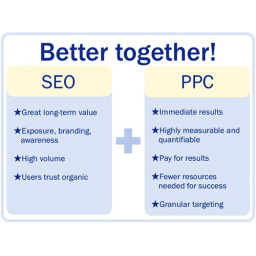Data, Mobile, Speed Optimization
by Abbs
Posted on 2023-05-18 08:00:59

Utilizing Structured Data Markup
Structured data markup is a type of code that is added to websites to provide online search engine with extra information about the content on the page. This information is then used by online search engine to better understand the content and screen rich snippets in the search engine result.
Structured data markup is essential for SEO since it can help improve the visibility of your content in the search results page, and can also improve click-through rates. In this chapter, we'll discuss how to utilize structured data markup to improve your SEO.
TIP:Don't bury the treasure! Optimize your site architecture for easy navigation and better user experience.
What is Structured Data Markup?
Structured data markup is a type of code that provides information about the content on a websites in a standardized format that is easily easy to understand by online search engine. This information can include things like the author of the content, the date it was published, and the kind of content (such as a dish, evaluation, or post).
Structured data markup is developed using a vocabulary of tags called "schema". Schema is a collection of tags that can be used to provide specific information about the content on a web page.
Structured data markup is contributed to the HTML code of a websites utilizing a particular syntax called JSON-LD. JSON-LD is a type of code that can be easily read and comprehended by search engines.

Why Use Structured Data Markup?
Structured data markup can provide a variety of benefits for SEO, including:
Enhanced Visibility in the Search Engine Result
Structured data markup can assist improve the visibility of your content in the search results by supplying additional information about the content on a websites. This can include things like the title of the article, the author, the date it was published, and more.
Rich Snippets
Structured data markup can likewise be utilized to show abundant bits in the search engine result. Rich snippets are additional pieces of information that are displayed alongside the title and meta description in the search engine result.
Rich bits can include things like star scores, images, and product information. These abundant bits can help improve click-through rates and drive more traffic to your website.
TIP:Beat the bounce! Optimize your website for lower bounce rates with engaging content and intuitive design.
Knowledge Chart
Structured data markup can likewise be utilized to provide information for the Google Understanding Graph. The Knowledge Chart is a database of information that is used by Google to provide additional information about search inquiries.
By supplying structured data markup on your website, you can increase the possibilities of your content being included in the Understanding Graph.
Kinds Of Structured Data Markup
There are various kinds of structured data markup that can be used to provide information about the content on a websites. Some of the most common types of structured data markup include:
Post Markup
- Post markup is utilized to provide information about short articles on a web page, including the heading, author, and date of publication.
Review Markup
- Evaluation markup is used to provide information about services or product evaluations on a web page, including the name of the services or product, the score, and the author.
Dish Markup
- Recipe markup is used to provide information about dishes on a web page, including the ingredients, cooking time, and serving size.
Occasion Markup
- Occasion markup is utilized to provide information about events on a web page, including the name of the event, the date and time, and the location.
Video Markup
- Video markup is utilized to provide information about videos on a websites, including the title, description, and period.
How to Include Structured Data Markup
Including structured data markup to your website can be an intricate process, but there are numerous tools available that can help streamline the process. Some of the most popular tools for including structured data markup include Google's Structured Data Markup Helper and Schema.org's Structured Data Markup Generator.
Prior to you start including structured data markup to your website, it is necessary to choose which types of markup you wish to utilize. As soon as
Sure, here's the extension of the chapter:
Utilizing Structured Data Markup for SEO
Structured data markup is a kind of code that web designers can use to provide online search engine with extra information about the content on their web pages. This additional information helps search engines understand the context of the content and present it in a more organized and helpful method to users.
Structured data markup can be contributed to websites utilizing a number of various formats, including Microdata, RDFa, and JSON-LD. Of these, JSON-LD is the suggested format by Google as it is easier to carry out and understand.
There are various types of structured data that can be utilized, including:
- Articles
- Occasions
- Recipes
- Products
- Evaluations
- Videos
- And more
By including structured data on your websites, you can improve the look of your listings in search engine results pages (SERPs) with abundant snippets. Rich bits are visual improvements that show extra information about the content, such as star scores, images, and prices. These enhancements can improve the visibility and click-through rates of your listings, causing more traffic and potentially higher rankings.
In addition to enhancing the appearance of your listings in SERPs, structured data can also help online search engine understand the content on your pages more accurately. This can help them much better match your content with relevant search inquiries and present it to users who are looking for it.
When implementing structured data, it is essential to follow the guidelines supplied by Google and other search engines to ensure that your markup is correctly formatted and optimized. This will help ensure that your structured data is interpreted properly by online search engine and that it offers one of the most benefit for your SEO efforts.
Overall, utilizing structured data markup can be an effective tool for enhancing the visibility and relevance of your content in search results. By supplying online search engine with additional information about your content, you can boost the appearance of your listings and increase the chances of drawing in clicks and traffic to your website.
TIP:Stay ahead of the competition! Monitor your analytics and adjust your SEO strategy accordingly.
Making Your Site Mobile-Friendly
With increasingly more people accessing the web through mobile devices, it's essential for website owners to ensure that their site is mobile-friendly. A mobile-friendly site not only supplies a better user experience however also helps in ranking higher in online search engine results.
In this chapter, we'll discuss the value of having a mobile-friendly site and how you can make your website mobile-friendly.
Value of a Mobile-Friendly Site
Mobile phone have actually become an important part of our lives, and individuals are significantly utilizing their smartphones and tablets to search the web. In fact, over half of all internet traffic worldwide now originates from mobile devices.
If your website is not optimized for mobile phones, users are likely to have a poor experience, and this can lead to high bounce rates and low engagement. A mobile-friendly site, on the other hand, provides a much better user experience and can cause increased engagement and conversions.

Another reason why having a mobile-friendly site is very important is that online search engine like Google provide choice to mobile-friendly sites. In 2015, Google presented a mobile-friendly upgrade that gave mobile-friendly sites an increase in search rankings. This indicates that having a mobile-friendly site is not just important for users but likewise for search engine optimization (SEO).
How to Make Your Site Mobile-Friendly
Now that we understand why having a mobile-friendly site is important, let's discuss how you can make your website mobile-friendly.
1. Use Responsive Style
Among the best methods to make your website mobile-friendly is to use responsive style. Responsive design enables your website to adjust to different screen sizes and resolutions, ensuring that your site looks excellent on all devices.
With responsive design, you don't need to create different websites for desktop and mobile phones. Instead, your website will automatically adjust to the screen size of the gadget it's being seen on.
TIP:Unlock the secret to higher rankings: Craft compelling meta titles and descriptions that entice clicks!
2. Optimize Images
Big images can decrease your website and make it tough to load on mobile phones. To ensure that your site loads rapidly on mobile phones, you must optimize your images for the web.
Optimizing images includes decreasing the file size of your images without compromising their quality. You can utilize image compression tools or plugins to optimize your images.
3. Use Mobile-Friendly Fonts
Some typefaces can be difficult to read on small screens, and this can result in a bad user experience. When designing your mobile-friendly site, it is necessary to select fonts that are easy to keep reading mobile devices.
Sans-serif font styles like Arial, Verdana, and Helvetica are great choices for mobile devices as they are easy to check out even at smaller font sizes.
4. Streamline Navigation
Mobile screens are smaller than desktop screens, and this indicates that you have less area to deal with. To ensure that your site is simple to navigate on mobile phones, you need to simplify your navigation.
TIP:No broken hearts or broken links! Regularly check and fix broken links on your website.
This implies reducing the number of menu products and ensuring that your menu is easy to gain access to and use. You must likewise ensure that your site's hierarchy is clear and that users can easily find what they're searching for.
5. Usage Mobile-Friendly Forms
Kinds are a fundamental part of numerous websites, but they can be tough to use on mobile devices. To ensure that your types are mobile-friendly, you ought to use mobile-friendly kind aspects like drop-down menus and radio buttons.
You must likewise ensure that your types are easy to use on mobile phones by lowering the number of needed fields and utilizing auto-fill any place possible.
Mobile-First Indexing
In 2018, Google announced its decision to change to mobile-first indexing. This indicates that Google will now utilize the mobile version of a website as the main variation when crawling and indexing content, even for desktop users. This change was made to show the truth that more and more people are accessing the web through mobile phones.
To ensure that your website is optimized for mobile-first indexing, you need to ensure that your mobile website has the very same content as your desktop website. This consists of text, images, videos, and other multimedia. In addition, make certain that the metadata on your mobile website is the same as your desktop website. This consists of page titles, meta descriptions, and header tags.
Another important element of mobile-first indexing is page speed. Mobile users expect websites to fill quickly, and Google thinks about page speed to be a ranking element. Therefore, it is essential that you optimize your website for speed by utilizing effective code, optimizing images and videos, and lessening using scripts and third-party tools.
Optimizing Site Speed
Site speed is an important consider both user experience and search engine optimization. A fast-loading website can cause increased user fulfillment, engagement, and conversions. In addition, online search engine like Google have suggested that they take site speed into account when figuring out search rankings. In this chapter, we will check out the significance of site speed and provide some tips and finest practices for optimizing it.
Why Site Speed Matters
Site speed is essential to the success of a website in many methods. First and foremost, fast-loading pages cause a much better user experience. Users are more likely to remain on a site that loads rapidly, which can result in increased engagement, pageviews, and conversions. On the other hand, slow-loading pages can frustrate users and lead to higher bounce rates.
In addition to the user experience advantages, site speed is also important for seo. Google has actually suggested that site speed is a ranking factor, and that faster sites might be rewarded with higher search rankings. This is because faster sites are thought about to be more easy to use and provide a much better general experience for online search engine users.
How to Determine Site Speed
Prior to you can optimize your site speed, you need to know where you stand. There are numerous tools available for measuring site speed, including Google's PageSpeed Insights, GTmetrix, and Pingdom. These tools will provide you with a report that shows your site's load time, page size, and other performance metrics.
It's important to note that site speed can vary depending on a variety of aspects, including the user's gadget and web connection. As a result, it's a good idea to test your site speed from numerous areas and devices to get a more total picture of your site's performance.
Tips for Optimizing Site Speed
As soon as you've determined your site speed, it's time to begin optimizing. Here are some tips and finest practices for improving your site's performance:
1. Optimize Images
Images can be a major contributor to slow page load times. To optimize your images, you should compress them as much as possible without sacrificing quality. There are numerous tools readily available for compressing images, including Kraken.io, TinyPNG, and Optimizilla.
In addition to compressing your images, you need to likewise think about utilizing responsive images. Responsive images adjust their size and resolution based on the user's device, which can lead to faster load times and a much better overall user experience.
2. Reduce HTTP Requests
Whenever a user loads a page on your site, their browser makes numerous HTTP demands to fetch the various resources needed to show the page. This consists of images, CSS files, JavaScript files, and more. The more demands that are made, the longer the page will take to load.
To decrease HTTP requests, you need to:
- Integrate several CSS and JavaScript files into a single file
- Use CSS sprites to integrate numerous images into a single file
- Utilize a content delivery network (CDN) to serve static files like images and CSS
3. Use Browser Caching
Browser caching allows you to store static files like images, CSS, and JavaScript in a user's browser so that they do not need to be re-downloaded every time the user sees your site. This can lead to faster page load times and a better general user experience.
To allow internet browser caching, you must:
- Set an expiration date or time for your fixed files
- Use a variation number in your file names to require the web browser to download brand-new files when required
4. Optimize Your Code
In addition to optimizing your images and lessening HTTP requests, you must likewise optimize your code. This consists of:
- Minifying your HTML, CSS, and JavaScript files to get rid of unneeded whitespace and remarks
- Using asynchronous loading
Certainly! Here is the chapter on optimizing site speed:
Why Site Speed Matters
Website speed has actually ended up being an essential ranking consider Google's algorithm. The reason behind this is easy - a fast-loading website supplies a much better user experience. Google's ultimate objective is to deliver the best possible user experience to its users, and slow-loading sites do not deliver that.
Furthermore, a sluggish website can result in a high bounce rate, which shows that visitors leave your site after visiting only one page. If you have a high bounce rate, it can harm your online search engine rankings due to the fact that it shows that visitors are not discovering what they are looking for on your website.
How to Determine Site Speed
Prior to you can start optimizing your site's speed, you need to determine it. Google's PageSpeed Insights is a free tool that evaluates your site's speed and supplies suggestions for enhancement.
Another tool you can utilize is GTmetrix, which offers a thorough analysis of your site's speed and recognizes locations for improvement. The tool also supplies a rating for your site's speed, which helps you track your progress as you make changes.
Best Practices for Optimizing Site Speed
1. Lower Image Size
Images can be among the most considerable elements contributing to slow page loading times. To optimize site speed, you require to decrease the size of your images. You can do this by compressing them or by utilizing an image optimization tool.
2. Minimize HTTP Requests
Every file that your website loads, including images, JavaScript files, and CSS files, needs an HTTP request. Minimizing the variety of HTTP requests can substantially improve your site's speed. You can do this by decreasing the variety of files your site loads or by using a tool that combines several files into one.
3. Usage Web Browser Caching
Web browser caching allows your website to store regularly used files, such as images and CSS files, on a visitor's computer. When the visitor returns to your site, their browser can pack the files from their computer instead of the server, which can significantly lower load times.
4. Minify CSS and JavaScript
Minifying your CSS and JavaScript files implies getting rid of any unnecessary whitespace, remarks, and code. This can considerably lower the size of your files and improve site speed.
5. Use a Content Delivery Network (CDN)
A Content Delivery Network, or CDN, can assist accelerate your website by keeping your website's files on several servers worldwide. This indicates that when a user demands a page, the server closest to them can deliver it quickly, reducing load times.
Conclusion
Optimizing your site's speed is crucial to enhancing your user experience and your search engine rankings. By decreasing image sizes, reducing HTTP demands, using browser caching, minifying CSS and JavaScript, and using a content delivery network, you can substantially improve your site's speed and provide a better experience for your visitors.
By following the best practices described in this chapter, you can ensure that your website loads rapidly, supplying a positive experience for your users and improving your search engine rankings.
In conclusion, making your site mobile-friendly is essential for SEO success. By following the tips laid out in this chapter, you can create a mobile-friendly website that is quickly, user-friendly, and optimized for search engines. Keep in mind, the key to success is to put the requirements of your users first. By concentrating on user experience, you can ensure that your website is accessible to everybody, no matter the gadget they are using to gain access to it.
Whether you are just starting with mobile optimization or are wanting to improve your existing mobile website, the tips laid out in this chapter will help you attain your objectives. By creating a mobile-friendly website, you can increase your visibility in online search engine results pages, drive more traffic to your website, and ultimately grow your business online.
In today's mobile-first world, having a mobile-friendly site is no longer an option but a necessity. A mobile-friendly site not only supplies a better user experience however likewise helps in ranking higher in online search engine results.
In this chapter, we've covered the fundamentals of using structured data markup for SEO. By offering extra information to online search engine about the content on your pages, you can improve the visibility and relevance of your listings in search results page. This can result in more traffic and possibly higher rankings, making structured data an important tool in any SEO strategy.
 What Are Long-Tail Keywords and Why Should You Utilize Them?
In the ever-evolving world of Seo (SEO
What Are Long-Tail Keywords and Why Should You Utilize Them?
In the ever-evolving world of Seo (SEO
 Making Use Of Paid Advertising for SEO
While organic search traffic is essential for any website, i
Making Use Of Paid Advertising for SEO
While organic search traffic is essential for any website, i
 Using Influencer Marketing for SEO
Influencer marketing has actually become a popular strategy for
Using Influencer Marketing for SEO
Influencer marketing has actually become a popular strategy for


